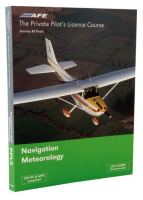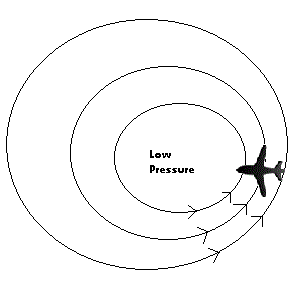The day before the lesson, the wind was forecast to be 24 mph (20 knots) and gusting even higher.
So, I was well prepared when the phone rang for this lesson to be cancelled.
It wasn’t a total loss, I guess as my instructor was just going to be sitting around anyway she said to come in and we could get some other ground work bits and pieces signed off in my training record.
You don’t pay if the propeller ain’t spinning (money makes the propeller go round), so this was a bit of a freebie, we like free stuff 🙂
TAF’s & METARS
Metars are actual observations of the weather, they attempt to give you a picture of what it’s like right now.
TAF’s (Terminal Aerodrome Forecast) are, as the name suggests, forecasts of the weather and give you a ‘best guess’ at what it might be like in the near future and for how long it might be like that.
Both come in an encoded text format, standardised by the ICAO if you can read them in one location, you should be able to read them anywhere in the world.
Met Office : Aviation Services
If you want accurate and up to date METAR’s & TAF’s, one of/the best source at least in the UK is The Met Office and thankfully they offer an “Aviation” service, for free. You just need to register (free) and then login and you can get at all the information.
In addition to METAR’s & TAF’s, The Met Office provides Form F214 & 215, which provide wind speeds and graphical displays of the weather updated regularly during the day.
Really good service, if you haven’t found it/aren’t fully using it to its full potential yet, check it out. As with all big websites there’s a lot of information and it’s sometimes hard to find where the good stuff on there is, but just those handful of bits are useful.
Aerodrome Information
Having gone through that lot and decoded a few METAR’s & TAF’s (more stuff signed off in the training sheet), I was shown possibly the only book I’ve yet to buy, the UK VFR Guide.
Maybe I shouldn’t have jumped in with “Ahhh yes, I need one of those….” Because the excitement was shot down pretty promptly by a reminder that actually, it can go out of date and the publisher is under no requirement to inform you.
The official source of information for aerodromes, should be the CAA’s AIP, specifically the Aerodrome section. If something changes, they will re-issue the page(s) affected. So another useful bookmark to have is where you can find all of this information.
In addition on there you can quickly search NOTAM’s (NOtice To Air Men) and find out things like why an area is currently marked as a danger area etc.
The Out of Date Chart
When you start to fly, there’s a lot of stuff you need and you’ll either buy it all in one big spending spree of ‘super preparation’ (there’s not masses of point to this), or you’ll add loads of it to wish-lists etc. and get friends & family to buy it you….. After years of “What do you want for….???” I finally had a huuuge list I could point people at 🙂
So of course when asked “Do you have a chart?”
The answer was an excited “Yes”, finally the beginnings of using it in anger for something!
Nicely folded, we began to unfold it and discovered it was Issue 37……bought just around the new year marker (guess), we had sailed past April and well, now it was out of date! Issue 38 is now out 🙁
If you ever wanted proof that buying stuff before you really need it isn’t useful, this is it – but hey, I got to practice my map folding with it so it wasn’t a total loss.
Now for the bad news, I couldn’t get the box for “Current / Valid Chart” ticked off, I might have had a very recent chart, but it wasn’t the current one 🙁
A good hour on the ground
All in all, a very enjoyable hour on the ground learning some new things, getting better at others and being shown around a few sites I probably should have been playing with a long time ago but have been far to busy with flying 🙂

